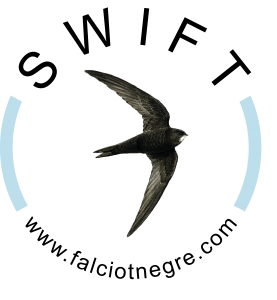Diet enrichment
![]() Wait a few seconds for the videos to load
Wait a few seconds for the videos to load
Giant mealworm (Zophobas morio)
Giant mealworm are great to enrich a diverse insect diet.
A great advantage on our diet management is that Giant mealworms can be frozen like the crickets (unlike the mealworms). This may help to keep a safe reserve during the breeding season.
They contain similar crude protein amounts as crickets and mealworms ~19%.
Insect larval stages have a higher fat content than adult insects, even though a higher caloric content provides a more concentrated energy source, having an influence on the rate of food passage. With more fats the rate of passage is slowed, thus Improves digestibility of most nutrients increasing the exposure to digestive enzymes and time for absorption.
That fat provides the essential unsaturated fatty acids such as linoleic acid required for optimal growth, highly convenient in many orphan admissions showing severe undernourishment.
SILK WORM (Bombyx mori),A great insect to supplement the swift insect diet
Gepostet von Falciot Vencejo Swift Rehabilitation am Donnerstag, 29. Januar 2015
Silk worm (Bombyx mori)
Silkworm is an excellent an healthy insect to be used to enrich an insectivore diet, with a low-fat content and remarkable nutritional values.
SILK WORM (Bombyx mori),HOUSE BREEDINGSilkworms are easy to grow. They are caterpillars that spin a silk cocoon and change into moths while inside. After hatching from an egg, the worms take one month to grow large enough to spin the silk. They spend three weeks in the cocoon, then emerge as a moth to mate and lay eggs. The eggs hatch into worms in a few weeks, and then the cycle continues.Before the cocoon stage, you can harvest them and freeze the worms to be used along the season.
Gepostet von Falciot Vencejo Swift Rehabilitation am Donnerstag, 29. Januar 2015
Silkworms are easy to grow. They are caterpillars that spin a silk cocoon and change into moths while inside. After hatching from an egg, the worms take one month to grow large enough to spin the silk. They spend three weeks in the cocoon, then emerge as a moth to mate and lay eggs. The eggs hatch into worms in a few weeks, and then the cycle continues.
Before the cocoon stage, you can harvest them and freeze the worms to be used along the season.
DIET ENRICHMENT ……. adding other insect speciesLocusts (Locusta migratoria) and other grasshopers are excelent and interesting insects to be used to enrich an insectivore diet, with remarkable nutritional values.
Gepostet von Falciot Vencejo Swift Rehabilitation am Mittwoch, 26. August 2015
Locusts (Locusta migratoria) and other grasshopers are excelent and interesting insects to be used to enrich an insectivore diet, with remarkable nutritional values
Important! The nutritional composition of all commercially produced insects may be incomplete in terms of minerals and other nutrients without appropriate supplementation.
More information:
Brue R.N. (1999) Nutrition. In: Ritchie B.W., Harrison G.J., Harrison L.R. (eds) Avian Medicine: Principles and Application. Florida: HBD International Inc., 63–95.
Finke M., Winn D. (2004) Insects and related arthropods: a nutritional primer for rehabilitators. Wildlife Rehabilitation and Medicine 27: 14–27.
Snyder R.L., Terry J. (1986) Avian nutrition. In: Fowler M.E. (ed.) Zoo and Wild Animal Medicine. Philadelphia: WB Saunders & Co., 189– 200

